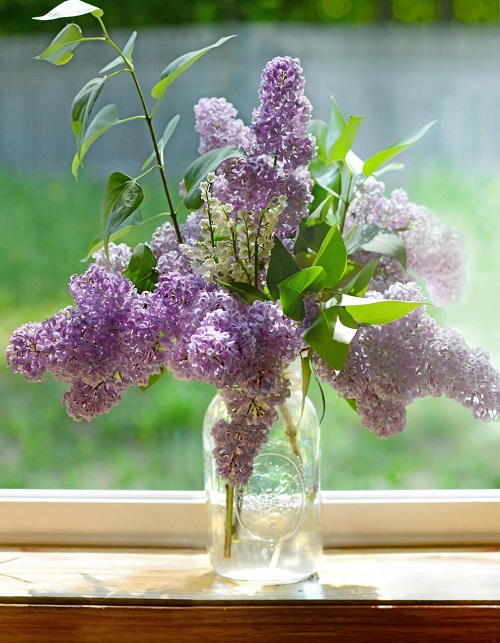Learn How to Grow Lilac from Cuttings in a simple way to have these gorgeous flowers in your home and garden.
Common Lilac are deciduous shrubs that flower during spring. It belongs to the family of olives and other ornamental plants such as Forsythia Bushes, Privet Hedges, and Ash Trees. The stunning quality of many varieties of Lilac is the sweet scent of the gorgeous blooms. The flowers appear in panicles or branching clusters. It is best to grow Lilac in the early fall, right before the ground dries. Read on to learn How to Grow Lilac from Cuttings.
Understanding Lilac Cuttings
Before you begin planting Lilac from cuttings, it is best to understand the necessary steps and growing needs.
It is also crucial to understand that the seasons and timing matter a lot when it comes to growing plants. They all tend to play an important role in rooting all the seeds to germinate and harvest. In this situation, the flowering plants will play an important role from when the cutting is kept submerged in the soil till they start to bloom.
Certain plants can be favorites or enemies in specific seasons. Understanding the timing right may be the first step towards propagating a Lilac from its cuttings.
Things you will need:
- Sand or perlite
- Clean Pruning shears
- Peat Pots
- Watering can
- Gardening gloves
- Rooting hormone
- Spray bottle
How to Grow Lilac from Cuttings?
1. Take Cuttings
Select a healthy lilac plant and pick out a softwood stem that looks fresh and soft. Use a clean, sharp pruning shear to make 4-6 inches in length cutting from the main plant.
Remember to wear gardening gloves while you take the cuttings, and you can use a sharp knife for the cutting too.
2. Snip Away Leaves
Get rid of all the bottom leaves from cuttings and keep the upper 2-3 leaves intact. After you have got the proper cuttings, place them in a glass of water.
3. Apply Rooting Hormone
Roots will begin to emerge from the nodes, which are the points from which the leaves are attached to the stem and have been snipped off. It is good to dip the cut part in a rooting hormone to help it callous over. This also speeds up the entire growth but ensures you do not apply the hormone powder in excess.
4. Plant the Cutting

You can prepare the container by filling it with potting soil mix, perlite, and sand. Moisten the mix evenly and lightly, and use a finger or a stick to dig the planting hole.
Dip the cutting’s bottom part in the rooting hormone and plant it in the hole. Then, cover the cutting lightly with a small amount of soil around the base to remain upright.
5. Placing the Pot

You can choose to grow several cuttings in the same container though it is best to make sure that the leaves are not touching each other. Even nursery trays with blocks or cell shapes can work for the cuttings. Then, keep the container in a warm spot on top of the refrigerator. It is not required to provide bright light to the plant now.
Follow a watering schedule daily or whenever required to keep the mix slightly and evenly moist but not soggy.
5. Cover the Pot
You can cover the container with a clear plastic bag, which will ensure the right level of humidity for the cuttings’ growth. Poke a couple of holes in the plastic to ensure that the moisture can escape and that there is proper air ventilation; otherwise, the cuttings can begin to rot.
6. Keep an Eye on the Growth

You need to keep an eye on the cuttings to develop their roots in 1-2 months’ time. It is usually an indicator of healthy, normal growth. When you notice new, fresh growth, you can move the container to a spot that receives bright but indirect sunlight and let the potting mix dry between the watering schedule.
Allow the Lilac to mature until the roots are established properly and then, shift them to the permanent outdoor spot.
Can You Root Lilac Cuttings in Water?
Certain plants can develop roots quite fast, even in a glass of water sitting on a bright and sunny windowsill, but this practice is not typically recommended for Lilacs.
However, if you still want to try it, you may want to take a cutting from a healthy plant and keep the stem submerged in 1-2 inches of water filled in a glass jar. Make sure to snip off the leaves from the stem’s part that will be submerged in the water to keep it from rotting. Now, add fresh water as required. If the stem grows roots, you can then plant the cutting in a container and allow it to grow until the young plant is established well and then shift it outside.















